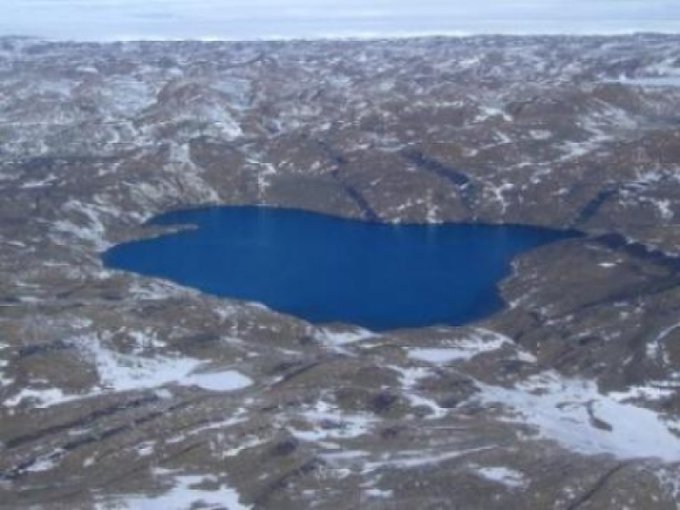
Dec. 24, 2017
Research Highlight
Revealing Details of Enzyme Function in Polyextremophiles
In a series of new studies, researchers have revealed details about how microorganisms survive in harsh environments on Earth. The studies center around halophiles and their enzymes that play a key role in survival in salty, cold environments.
The first paper, “Key amino acid residues conferring enhanced enzyme activity at cold temperatures in an Antarctic polyextremophilic β-galactosidase,” was published in the Proceedings of the National Academy of Sciences (PNAS), and explores the role that specific amino acid residues play in extremely salty environments. The team studied the halophile H. lacusprofundi (Hla), found in Antarctica’s Deep Lake. This highly salty lake is in the east of the continent and is one of the least productive environments known on Earth. Salinity in Deep Lake is 10 times higher than the ocean, and this high salt content helps keep the water liquid at temperatures as low as -20 ºC.

Deep Lake in Antartica. The water in the 36-metre deep lake is so salty it remains in liquid form down to a temperature of minus 20 degrees Celsius.Image credit: University of New South Wales.
The team used an interdisciplinary approach in the study, combining comparative genomics, mutagenesis, kinetic analysis, and molecular modelling, to understand the structure and function of proteins under the extreme conditions found in Deep Lake. Unlike similar proteins from other organisms, the proteins found in Hla have a negative charge at their surface. This allows them to bind water molecules, which in turn helps them remain in solution in the extremely salty environment.
The second study, “An Antarctic Extreme Halophile and Its Polyextremophilic Enzyme: Effects of Perchlorate Salts,” was published in the journal Astrobiology. This work expands on the PNAS study by looking at how Hla survives in the presence of toxic salts. Perchlorate salts have been identified on the surface of Mars, and understanding their effects on microorganisms is essential in determining the habitability of environments at the martian surface. The study concludes that halophilic organisms like Hla could survive in the presence of sodium or magnesium perchlorates at the current estimated martian concentrations.

Mosaic of images from Curiosity's Mast Camera (Mastcam) shows geological members of the Yellowknife Bay formation. These rocks record superimposed ancient lake and stream deposits that offered past environmental conditions favorable for microbial life.Image credit: NASA/JPL-CALTECH/MSSS.
A third study, “Survival of halophilic Archaea in Earth’s cold stratosphere,” published in the International Journal of Astrobiology, assesses cold-adaptation of halophiles in stratospheric conditions. The team launched live cultures of Hla and a mesophilic model organism, Halobacterium sp. NRC-1, to the stratosphere on helium balloons. Unlike Hla, Halobacterium sp. NRC-1 is not adapted to cold environments, and showed reduced viability when the balloons returned to Earth. The cold-adapted Hla culture, however, had nearly complete survival. Using genome-wide transcriptomic analysis, the team showed how genetic responses of Hla to cold temperatures enhanced the organism’s survival.
In a fourth publication, “Survival of microbes in Earth’s stratosphere,” published in the journal Current Opinions in Microbiology, the team provides a review of stratospheric microbiology. The stratosphere of Earth is the second layer of the atmosphere encountered when moving upward from the surface. It starts at about 10 kilometers, and is thought to represent the upper altitudinal limit for life. In order to survive in the stratosphere, organisms must tolerate a range of conditions that include elevated radiation levels, cold, and desiccation.
Together, the studies provide an important advancement in our understanding of microbial survival in cold, salty environments, and could have implications in the study of Mars habitability. Additionally, studies of microbial survival in the Earth’s stratosphere could be relevant to studies on Earth’s changing climate. The work was supported by NASA Astrobiology through the Exobiology & Evolutionary Biology Program.
Further Reading:
Scientists identify key factors that help microbes thrive in harsh environments (phys.org)